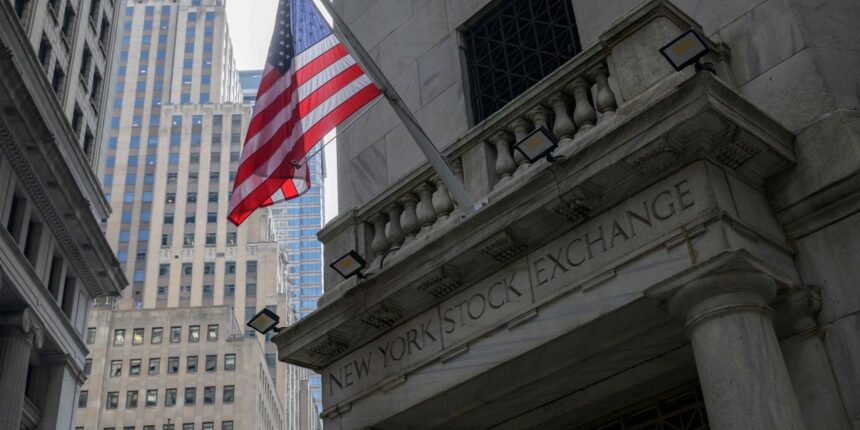U.S. stocks are facing a triple threat from a stronger U.S. dollar, rising Treasury yields and higher oil prices that could further erode gains accrued by the main indexes since the start of 2023, analysts told MarketWatch.
“The summer rally in stocks is succumbing to higher oil, rates, and a stronger dollar,” said Michael Kramer, founder of Mott Capital Management and a longtime independent equity analyst.
At the root of the problem is the notion that the Federal Reserve may need to keep interest rates higher for longer, even if the central bank ultimately decides not to raise rates at its upcoming meetings in September and November. This has helped push Treasury yields and the U.S. dollar higher.
Rising crude oil prices, along with demands for higher wages from auto workers and fast-food workers, have helped to stoke fears that inflation could reaccelerate, essentially forcing the Fed’s hand.
The central bank and its chairman, Jerome Powell, have said they will keep interest rates elevated while continuing to trim the central bank’s bond holdings until inflation shows signs of a sustainable retreat back to the central bank’s 2% target.
The S&P 500
SPX
has fallen 2% between the start of August and Monday’s close, according to FactSet data. The Nasdaq Composite
COMP,
which has outperformed in 2023 thanks to the artificial-intelligence craze boosting shares of megacap technology firms like Nvidia Corp.
NVDA,
Apple Inc.
AAPL,
and others, is down 2.6% over the same period.
Over the same period, the ICE U.S. Dollar Index
DXY
has risen 2.2%, while the 10-year Treasury yield has climbed by 24 basis points to 4.284%, according to FactSet.
U.S.-traded crude-oil prices have risen even more sharply, with West Texas Intermediate crude-oil futures rising 7.9% on a continuous contract basis since Aug. 1, according to FactSet data. As of Monday’s settlement, WTI crude for October delivery
CLV23,
traded at $87.29 a barrel.
To be sure, stocks’ losses are still modest compared to indexes gains since the start of 2023. Since Jan. 1, stocks have embarked on a rebound rally that has taken many Wall Street analysts by surprise.
It’s a stark contrast to 2022, when the S&P 500 and Nasdaq posted their biggest calendar-year losses since 2008, the year that a crisis rooted in souring mortgage bonds nearly toppled the global financial system.
Since the start of 2023, the S&P 500 has gained 16.6%, while the Nasdaq is up a whopping 32.2%, FactSet data show.
But according to some bearish investors, the pullback has been significant enough to rekindle expectations for an even more volatility ahead, especially as concerns about global economic growth loom while the outlook for the Fed’s monetary policy becomes uncertain.
Although there are two weeks left until the end of September, both the S&P 500 and Nasdaq are on track to fall for a second straight month after declining in August. If this happens, it would mark the first back-to-back monthly losses for the indexes since September 2022.
And there’s a good chance that it could happen. September is historically the worst month for U.S. stock market performance going back decades. Since 1945, the S&P 500 has delivered an average monthly return of negative 0.73% during the month of September, the worst average performance of any month during that period, according to data shared with MarketWatch by Sam Stovall, chief investment strategist at CFRA Research. The S&P 500 was launched in 1957 but performance data from before its creation is often cited by analysts using composites of the performance of early index constituents.
Charlie McElligott, an expert in equity derivatives at Nomura, noted in a note to clients shared with MarketWatch on Tuesday that performance of so-called “risk assets” like stocks is “particularly dicey” in the second half of September and early October.
Expectations that inflation could re-accelerate are at the root of the market’s concerns. Traders expectations for headline CPI have notably risen over the past month, according to inflation-swap data compiled by Bloomberg.
Analysts have pointed out that a hotter-than-expected reading on August CPI data due on Wednesday could undermine stocks.
See: U.S. inflation is set for a big increase, CPI to show. Here’s why.
“Fed rate cut expectations are a major support beam for the stock and bond markets right now, and if inflation runs hotter than expected, it’ll undermine the idea that the Fed will be cutting rates aggressively by year-end, and that will leave this market susceptible to a pullback,” said Tom Essaye, founder of Sevens Report Research, in emailed commentary shared with MarketWatch on Tuesday.
Economists polled by the Wall Street Journal expect Wednesday’s CPI report to show consumer prices increased by 3.6% in August, higher than the 3.2% year-over-year increase seen in July.
U.S. stocks were trading lower Tuesday afternoon ahead of the release of the data, which is due at 8:30 a.m. Eastern Time. The S&P 500 was off by 15 points, or 0.3%, at 4,472, while the Nasdaq Composite was down 111 points, or 0.8%, at 13,809. The Dow Jones Industrial Average
DJIA
was the only one of the three major U.S. equity benchmarks trading in the green: it was up 81 points, or 0.2%, at 34,746.








